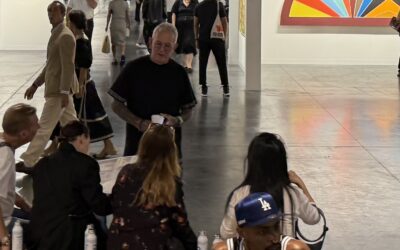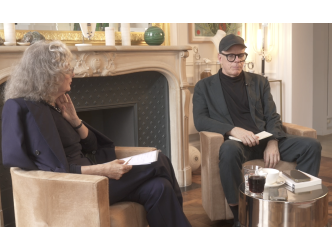A whirlwind of greenery
Suddenly, the world of contemporary art has been swept up in a whirlwind of greenery. Lucas Arruda (born in 1983), a Brazilian landscape painter known for his small-format works, has become the darling of art world insiders across the globe.

From the Beyeler Foundation in Basel to the Long Museum in Shanghai, from the Pinault Collection in Paris to the Stedelijk Museum in Amsterdam and the Guggenheim Museum in New York, numerous institutions have been captivated—so much so that they’ve acquired his landscape paintings, instantly recognizable for their blended tones that often verge on abstraction.
Most beautiful rooms

As a crowning achievement, at just 43 years old, he’s now been welcomed to the holy site of landscape painting: the Musée d’Orsay, where his work will be on display through July 20. Thirty-eight paintings by this media-shy artist are installed in three of the world’s most beautiful rooms, those dedicated to the museum’s Impressionist art. Whatever happens, visitors are guaranteed a spectacular introduction.

Musée d’Orsay, Claude Monet
To reach Arruda’s remarkable work, one must first pass through the room where the Van Goghs are displayed. Have your breath taken away once more in front of “Starry Night,” then, move on to Monet’s room. That’s where the juxtaposition between the Impressionists and the artist from São Paulo begins. The collections works displayed there were selected by the artist in collaboration with the exhibition’s curator, Nicolas Gausserand.
Nicolas Gausserand
It must be said: Even faced with such a tidal wave of masters, Arruda holds his ground. Perhaps it’s thanks to the profusion of brushstrokes that, at first glance, very much evoke Monet. But he actually employs a range of techniques. Sometimes he scrapes away material or punctures the canvas to create the illusion of celestial light. He paints his jungles, seas and deserts on modestly sized canvases—often just 24×30 cm. His compositions draw undeniable strength from these small dimensions, as if compressed into a dense force between the four corners of the canvas.
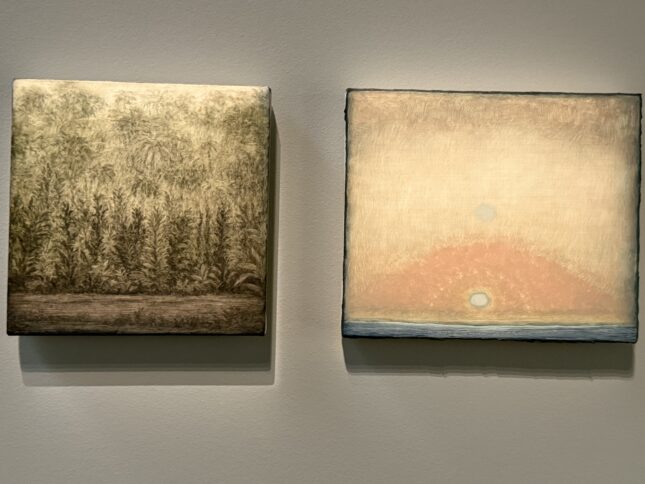
His chosen tones are muted, running from white to brown and ultimately fading into green. Nothing flashy. For 15 years, Arruda seems almost to have been painting the same picture. This love of repetition with its conceptual vision of nature, and this taste for colors that seem to avoid attention, recall the near-monastic still lifes of Italian artist Giorgio Morandi (1890-1964).
Mental landscapes
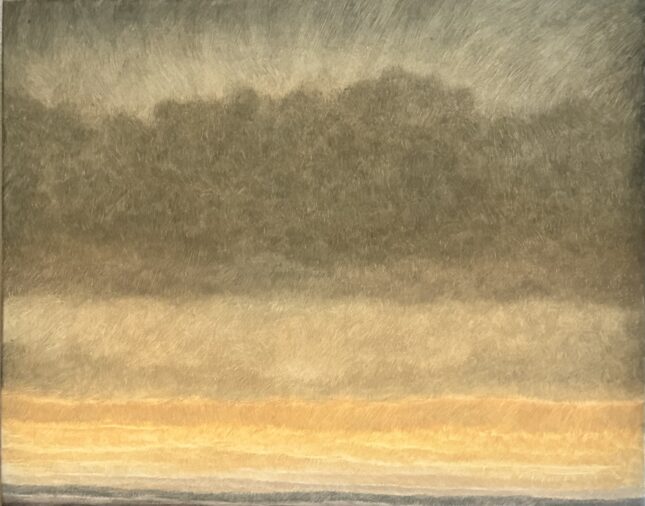
There is however a major difference between the views of nature by the Impressionists—famous for being among the first to paint en plein air—and those of the Brazilian. His predecessors aimed to capture a feeling felt on the spot. Lucas, in contrast, depicts exclusively imagined scenes. He writes: “I think this accumulation of memories, of overlapping images over time, acts as an internal archive of landscapes from different times and places… I believe that painting does not obey the linear passage of time.”
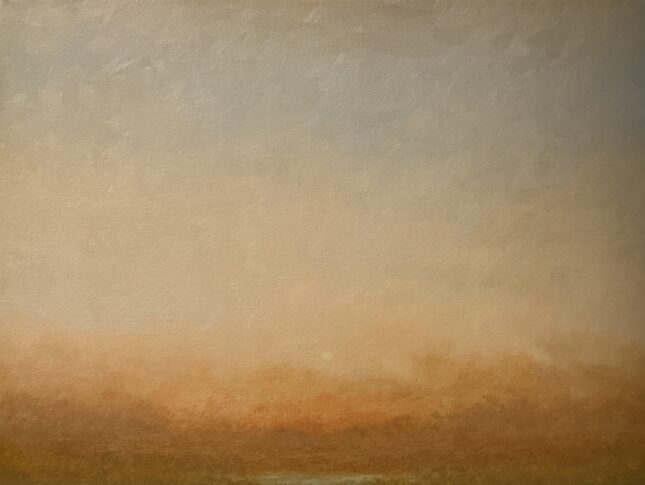
He creates mental landscapes from what digital artists might call data—except that these data points are entirely intimate and cerebral.
José Gamarra

José Gamarra
Arruda goes against the grain of his time. As a side note, another Latin American contemporary artist, José Gamarra—born in 1934 in Uruguay and well known in his country—painted dreamlike landscapes as early as the 1960s, which he later populated with various figures.
Gustave Courbet
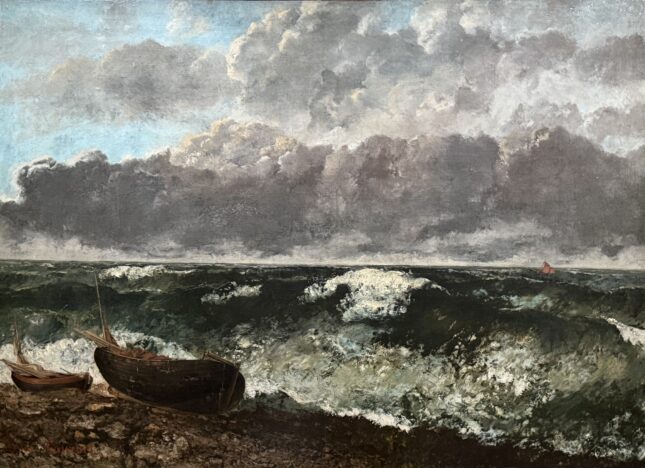
Gustave Courbet
Back at the Musée d’Orsay, the most striking juxtaposition in the exhibition is with a seascape by Gustave Courbet dated 1870, which was specially moved from the Realist painting galleries to the Impressionist rooms. By placing Courbet’s majestic “Stormy Sea” beside Arruda’s miniature contemporary works, one gains a deeper understanding of the almost-silent turmoil that simmers within Arruda’s art. Guy de Maupassant once wrote that Courbet applied “slabs of white paint with a kitchen knife onto a large bare canvas.” Those same thick slabs appear in the Brazilian’s rhythmic compositions.
Through July 20. Musée d’Orsay. https://www.musee-orsay.fr
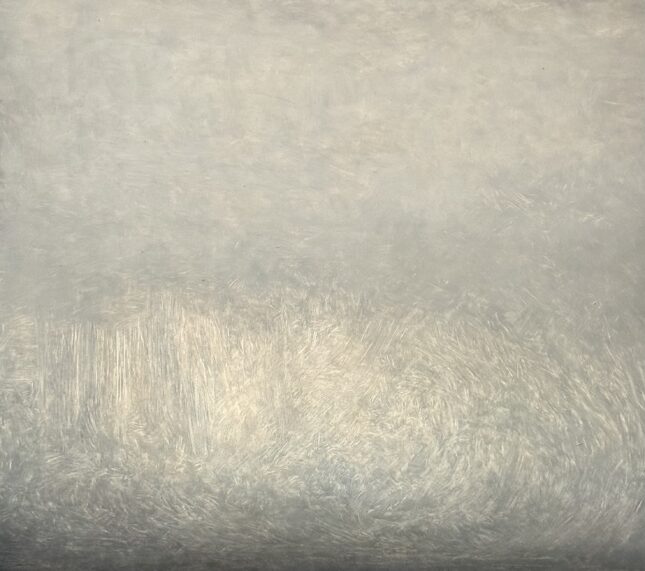
Support independent news on art.
Your contribution : Make a monthly commitment to support JB Reports or a one-off contribution as and when you feel like it. Choose the option that suits you best.
Need to cancel a recurring donation? Please go here.
The donation is considered to be a subscription for a fee set by the donor and for a duration also set by the donor.



